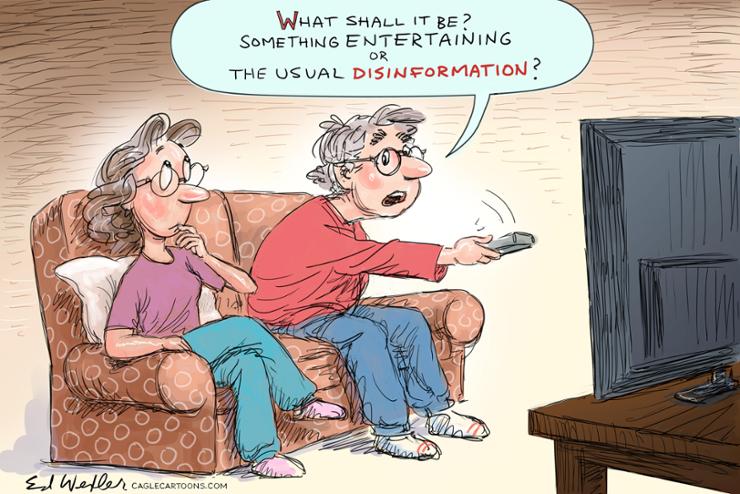The Usual Disinformation: Navigating the Murky Waters of Fake News in the Digital Age
The digital age, while offering unparalleled access to information, has also unleashed a torrent of disinformation, blurring the lines between fact and fiction. This "infodemic," as some experts call it, poses a significant threat to democratic processes, public health, and societal cohesion. From manipulated videos and fabricated news stories to coordinated social media campaigns, disinformation campaigns exploit the speed and reach of online platforms, often targeting vulnerable populations and amplifying existing societal divisions. The challenge lies not just in the sheer volume of false information circulating, but also in its increasingly sophisticated nature, making it harder to detect and debunk. This necessitates a multi-pronged approach involving media literacy, technological solutions, and robust fact-checking mechanisms to combat this insidious threat.
One of the most concerning aspects of disinformation is its ability to mimic legitimate news sources, often employing tactics like mimicking established news outlets’ logos and website designs. This "fake news" phenomenon erodes trust in credible journalism and creates a climate of skepticism, making it difficult for the public to discern reliable information from fabricated narratives. The proliferation of deepfakes, AI-generated videos that can realistically depict individuals saying or doing things they never did, further complicates the issue. These sophisticated manipulations can be used to spread misinformation, damage reputations, and even incite violence, highlighting the urgent need for improved detection technologies and public awareness campaigns.
Social media platforms, while serving as valuable tools for communication and information sharing, have become prime breeding grounds for the spread of disinformation. The algorithms that govern these platforms often prioritize engagement over accuracy, inadvertently amplifying misleading content that generates strong emotional responses. This creates echo chambers where users are primarily exposed to information that confirms their existing biases, further entrenching partisan divides and making it difficult for factual information to penetrate. Furthermore, the anonymity afforded by online profiles allows malicious actors to create fake accounts and spread disinformation with impunity, making it challenging to hold them accountable for their actions.
The consequences of disinformation can be far-reaching and devastating. False narratives surrounding public health crises, such as the COVID-19 pandemic, can undermine vaccination efforts and lead to preventable illnesses and deaths. Similarly, disinformation campaigns targeting elections can sow distrust in democratic processes and influence voting outcomes, potentially undermining the legitimacy of elected governments. In extreme cases, the spread of hate speech and misinformation can incite violence and exacerbate existing social tensions, leading to real-world harm. The rise of online extremism and radicalization is a stark reminder of the potential consequences of unchecked disinformation.
Combating this complex challenge requires a multi-faceted approach. Media literacy education is crucial in empowering individuals to critically evaluate information and identify potential signs of manipulation. This involves teaching critical thinking skills, encouraging skepticism towards online content, and promoting the use of reliable fact-checking resources. Simultaneously, technology companies must take greater responsibility for the content shared on their platforms, investing in improved detection algorithms and content moderation strategies. Increased transparency in how algorithms amplify content and clearer guidelines for identifying and removing disinformation are essential steps.
Beyond individual and platform-level interventions, collaboration between governments, media organizations, and civil society groups is vital in establishing effective counter-disinformation strategies. This includes sharing best practices, developing coordinated responses to emerging disinformation campaigns, and supporting independent fact-checking initiatives. International cooperation is also crucial in addressing the transnational nature of disinformation operations, particularly those originating from state-sponsored actors. Ultimately, a concerted and sustained effort from all stakeholders is required to navigate the murky waters of disinformation and safeguard the integrity of information in the digital age. This includes promoting media literacy, enhancing technological solutions, fostering collaboration between stakeholders, and fostering a culture of critical thinking and responsible online engagement. The fight against disinformation is not just a technological battle; it is a battle for the very foundation of truth and trust in our societies.


